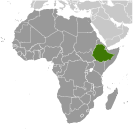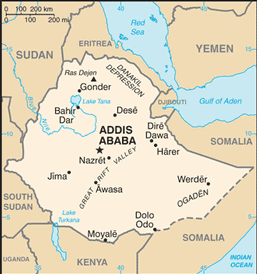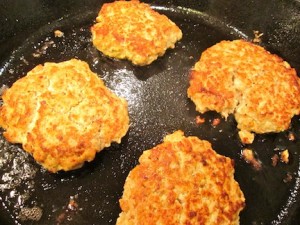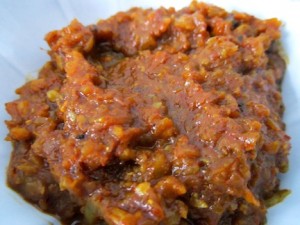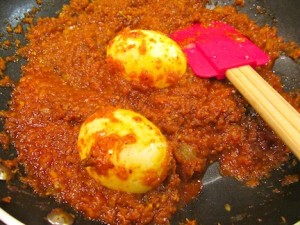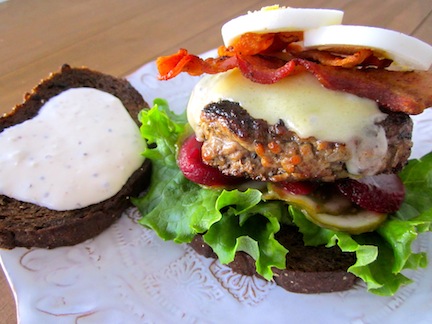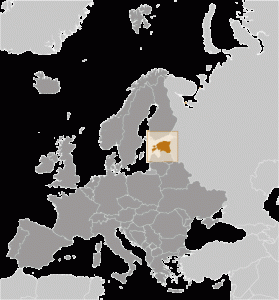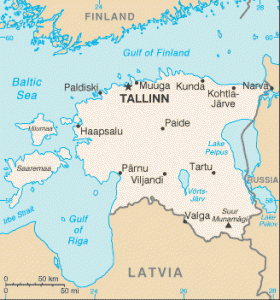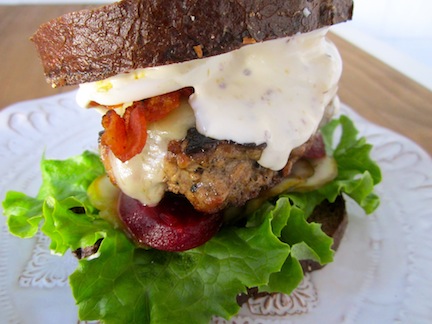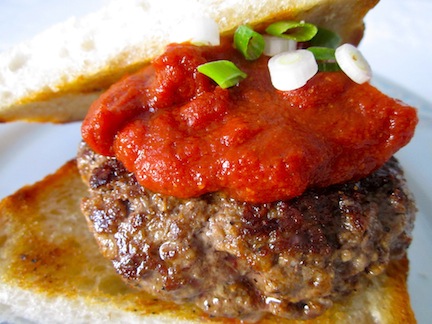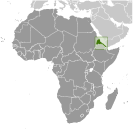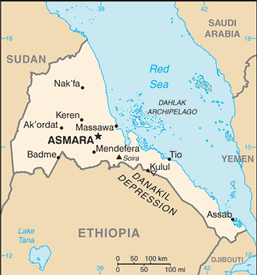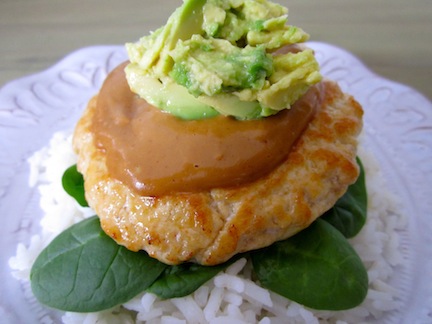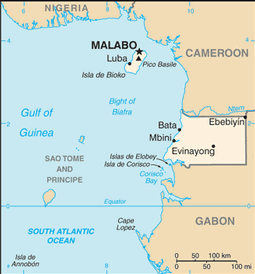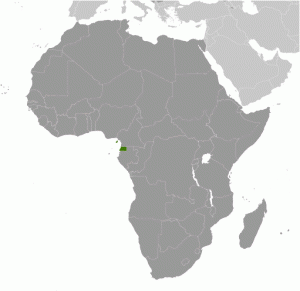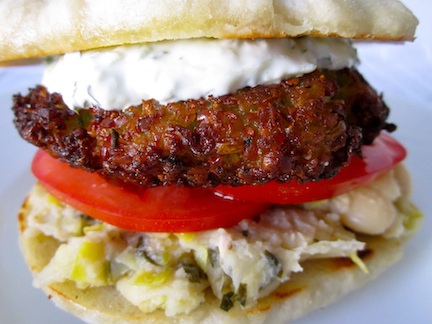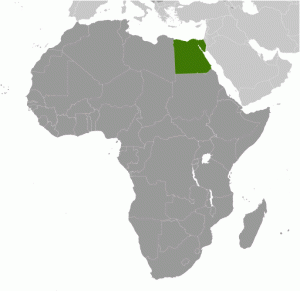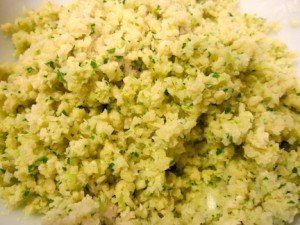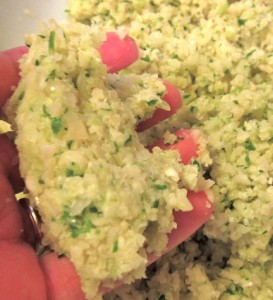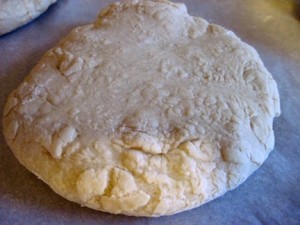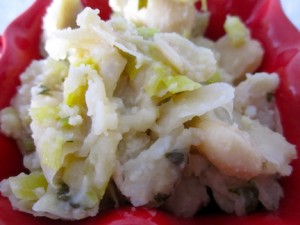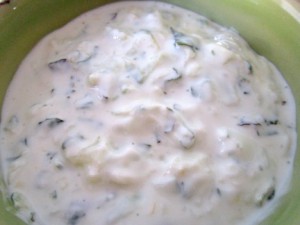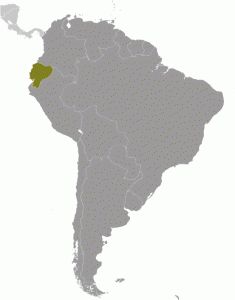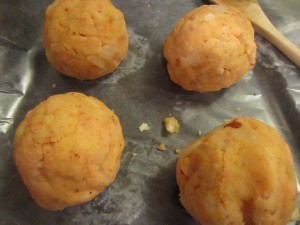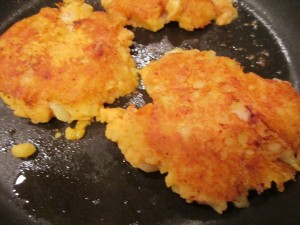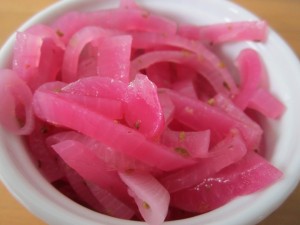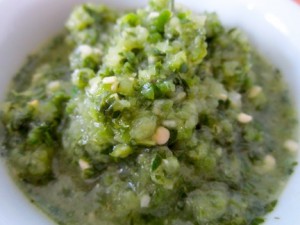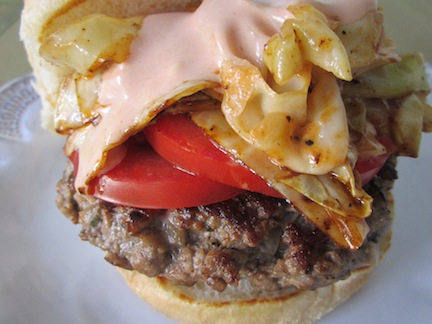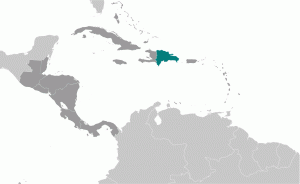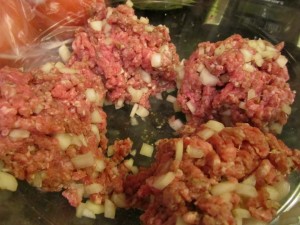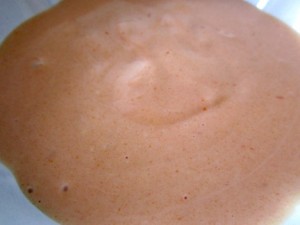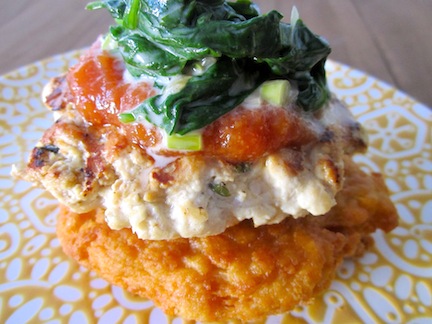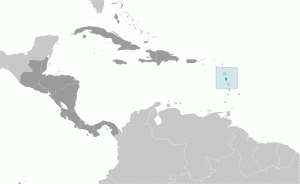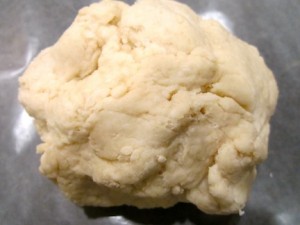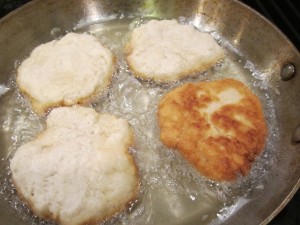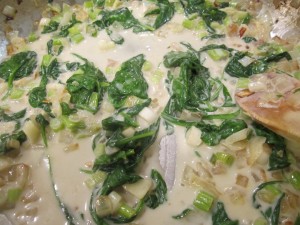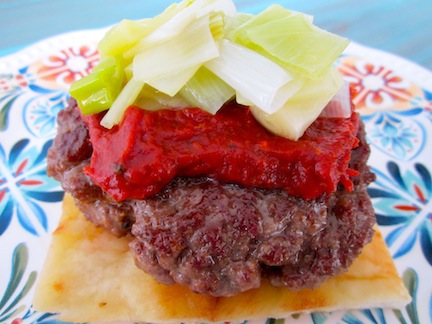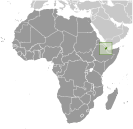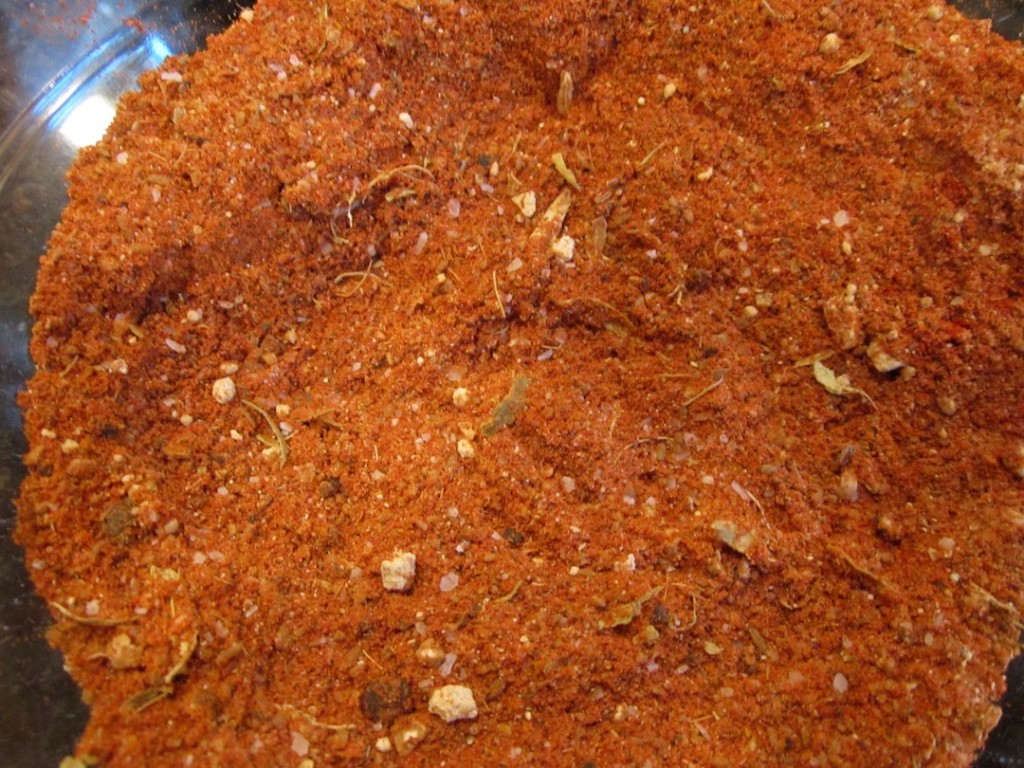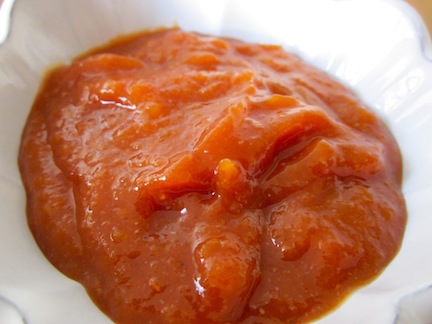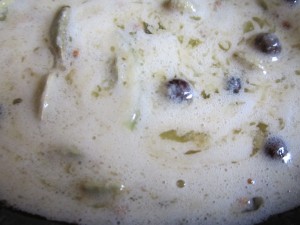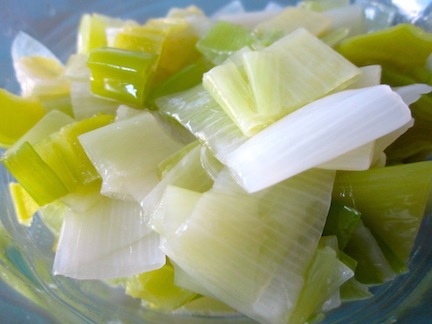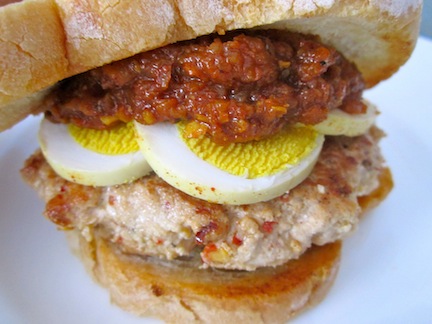 Chicken Burger with Spicy Red Pepper Sauce
Chicken Burger with Spicy Red Pepper Sauce
Our last stop in the E’s is Ethiopia. If you haven’t read the Eritrea burger recipe, you should, as it’s really part of this same story. Ethiopia is located in the Horn of Africa, bordered by Djibouti, Somalia, Sudan, South Sudan, Kenya and Eritrea.
It is the oldest independent country in Africa and, in fact, it pretty much avoided being colonized by Europeans except for a brief time from 1936-1941 during which the Italians were in charge. But the Ethiopians got rid of the Italians and have been independent ever since. Ethiopia was a founder country in the UN and the current government is relatively stable. But that’s about the end of the good news.
Ethiopia’s economy is largely based on agriculture. Unfortunately the 20th century brought several wide spread draughts to the country and even today many of the almost 91 million Ethiopians depend on foreign food aid for survival. When feeding your family is a daily concern, other things tend to become less important and almost two thirds of Ethiopians over age 15 are illiterate. Add to all of that frequent and still not completely resolved border disputes between Ethiopia and Eritrea and the basic picture is of a hard life in one of the poorest countries in the world.
But of course we can always find joy in food. On the plus side, Ethiopians embrace flavor and spice. In a land where food is scarce and where people need to stretch ingredients, spices can make up for a lot. But to be honest, as I mentioned briefly in my write up about Eritrea (the cuisines of the two countries are very similar), I don’t like Ethiopian food. Admittedly, I’ve only tried it once, but it was really not pleasant. I promised the whole story, here it is.
When I was in college, my roommate decided she wanted to try Ethiopian food for her birthday. She was (and still is) Finnish, so she was more open to exotic experiences than some of the rest of us – after all, she ate pickled herring and you all know how I feel about that. So, we all hoped on the Metro and headed up to Adams Morgan and the Red Sea Restaurant which we had heard was a great Ethiopian restaurant. I was 19 and still thought of hummus as an exotic food, but still, I found the dinner unpalatable. I hated the family style of dining where they put my dinner on a plate with three other people’s dinners (and they are all stew like, so they run together). It’s not that I have problem with foods touching, it’s just that at the time I didn’t eat fish or lamb and did not appreciate having fishy and lamby flavors contaminating my chicken. As it turned out that was the least of the problems. The next issue was the color – everything looked like baby poop – it was all green or brown or mustard yellow/brown – as a girl who still hadn’t discovered the joy of curries, this was quite off-putting. Then there was the bread – injera, the spongy texture just didn’t seem like a food texture to me, it seemed too literally spongy. But the worst part was the flavor – the spice level just blew out my pallet. Ethiopian food is hot, really hot and spicy, and I felt the spice level drowned out all of the other flavors.
Looking back on it, I really wasn’t ready for Ethiopian food at 19. I really think you need to ease in to the flavors that are most different from your home country. For me, those are the African flavors; they seem the most exotic, the most difficult to adjust my palate to. So it’s good that Ethiopia wasn’t the first of the African countries that I had to tackle. I’ve spent so much time playing with African flavors and the varied cuisines of this continent, that Ethiopia wasn’t that hard. It still isn’t my favorite cuisine, nor is it my favorite burger, but if you like your food super spicy with lots of complex flavor, you will enjoy this burger.
I have created yet another Berbere seasoning, I think that brings us to three, but I have not idea if they are different from each other (I didn’t look back to check), it is representative of how many versions of this “basic” spice there are. I also tried a store bought Berbere, which was good – really good, so if you don’t have a pantry full of crazy spices, just buy a package of pre-blended Berbere. I used Seasoned Pioneers brand (they did not pay me, nor did I get the spice for free).
Ethiopians have a chicken in red sauce (Doro Wat) that is pretty traditional and this is where I took my inspiration. The red in the sauce is from the spice blend (yeah, it’s hot), then after you cook the chicken you take hard-boiled eggs and finish them in the spicy red sauce. It seems the fates are conspiring to bring hard-boiled eggs into our lives – I admit I was dubious at first, but I’m a believer now. Fried eggs are even better, but hard-boiled eggs are a lot easier and more versatile. First Estonia, now Ethiopia – hard-boiled eggs rock.
I tried making homemade injera – here’s what that looked like…
It was work that didn’t pay off. I still preferred the sourdough bread. If you want make injera, there are lots of recipes out there – they all pretty much come down to teff flour, yeast and water – ferment for a day or five (depending on the recipe), then make a pancake out of the dough. It’s not that hard, so try it if you want a more authentic experience. I’ll stick with the spirit of the cuisine and a little less work myself 🙂
Overall this burger is full flavored and spicy (did I mention that it’s spicy?). The sauce would work great with a veggie patty, so I’m calling it veggie friendly. Paul (my husband) and I both thought it was good and represented the flavors of Ethiopia well, but both of us would have liked it better a little less spicy. My parents both found it way too spicy and really didn’t like it at all. So you be the judge – try it out and let me know what you think.
Ethiopian burger
1¼ pound chicken breast cubed (or 1 pound ground chicken)
1 lemon juiced
1 inch of ginger root grated*
2 large cloves of garlic minced
2 Tablespoons Berbere seasoning
8 slices of sourdough bread
Seasoned Butter (recipe below)
Red Chili Sauce (recipe below)
Hard Boiled Eggs (recipe below)
In a large glass bowl, combine chicken, lemon juice, ginger, garlic and Berbere. Marinate for 1 hour then grind the chicken and form patties out of the ground chicken. In the meantime, grill the bread in seasoned butter in a cast iron pan. Add 2 Tablespoons of the Seasoned Butter to the pan and grill the burgers until cooked through.
To plate, start with 1 slice of grilled bread, add the cooked patty then top sliced hard-boiled egg and finish with Red Chili Sauce.
*Note: I buy ginger root then put it in a plastic bag in the freezer – it keeps almost indefinitely while only losing a little bit of its potency from fresh ginger.
Seasoned Butter
1 stick butter
2 sticks cinnamon
1 Tablespoon fenugreek seeds
10 whole cloves
½ teaspoon whole allspice
Combine all ingredients in a small saucepan and heat over med-low until butter melts. Skim off foam, then pour the clear part of the butter into a glass bowl and use for the recipe.
Red Chili Sauce
2 chopped onions
½ inch ginger root chopped
3 cloves garlic peeled
2 Tablespoons Seasoned Butter
2 Tablespoons Berbere seasoning (recipe below)
juice of 1 lemon
½ cup water
salt to taste
2 hard-boiled eggs peeled (slightly under cook these so that they can finish cooking in the sauce)
Combine onions, ginger and garlic in a food processor and pulse until you get a paste. Sauté paste in Seasoned Butter over medium high heat for about 5 minutes stirring regularly. Turn heat to low then add Berbere, lemon juice and water and sauté for another 5 minutes. Salt to taste. Add the lightly hard-boiled eggs and cook for another 5-10 minutes over low. Serve hot.
Berbere Seasoning
10 dried bird chilies
6 whole allspice
10 whole green cardamom pods
3 whole cloves
½ teaspoon cumin seeds
1 teaspoon pepper corns
½ teaspoon turmeric
¼ teaspoon cinnamon
2 Tablespoons ancho chili powder
½ teaspoon cayenne
Place all of the spices in a dry pan and roast over low heat until fragrant. Place spices in a spice blender and pulse until you get an even mixture. I used this version for the sauce and the store bought version for the chicken marinade.
©Copyright 2012 Linda Monach

